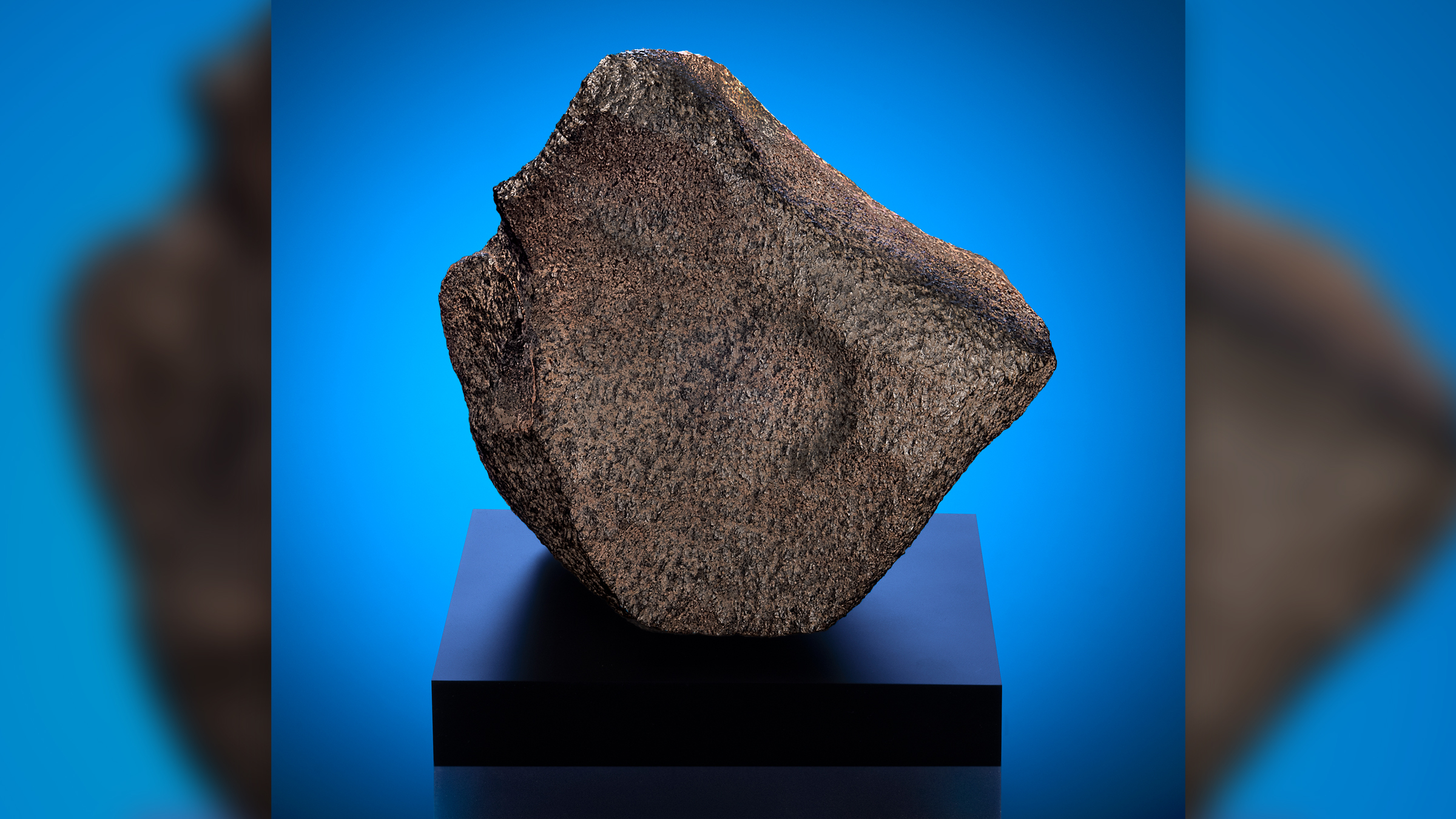World's largest Martian meteorite goes on display
The chunk of rock fell to Earth after being ejected from the Red Planet.
The largest piece of Mars ever to fall to Earth is being displayed for the first time.
The hefty chunk of Mars weighs 32 pounds (14.5 kilograms) and measures 10 inches (25 centimeters) across at its widest point. It was unveiled Wednesday (Sept. 1) at the Maine Mineral and Gem Museum in Bethel, which also houses approximately 6,000 extraterrestrial rocks, including the largest piece of moon rock and the oldest igneous rock, formed from volcanic activity, in the solar system.
The lump of rock wound up on Earth after a large asteroid or comet blasted it off the Martian surface.
"Martian rocks can fall to Earth as meteorites," Carl Agee, director of the Institute of Meteoritics at the University of New Mexico, told Live Science. "They are ejected off Mars by large, energetic impact events."
Related: 7 most Mars-like places on Earth
The Martian rock, named Taoudenni 002, is "by far the largest complete uncut Martian meteorite on Earth," said Agee, who was involved in confirming the rock did indeed originate from the Red Planet.
There are around 300 pieces of Martian rock on Earth, totaling around 500 pounds (227 kg). However, collectors often break them apart to sell them separately, so the actual number of known Martian meteorites on Earth is between 100 and 150, Agee said.
Get the world’s most fascinating discoveries delivered straight to your inbox.
After powerful impacts eject the rocks from Mars, they drift through space and eventually end up on an Earth-crossing orbit around the Sun.
A local meteor hunter discovered Taoudenni 002 near a desert salt mine in Mali before world-leading meteorite dealer Darryl Pitt acquired it for the Maine Mineral and Gem Museum in April 2021. "The meteorite fall was not witnessed, but it was likely recent," Agee said. "In the last few 100 years perhaps," due to its well preserved condition, he added.
After acquiring the meteorite in Mali, Pitt sent a small sample of the rock to Agee to confirm its origin.
Martian meteorites have specific chemical signatures, and the minerals and elements in Taoudenni 002 perfectly matched the known Martian minerals, Agee said.
"It is a shergottite, which is the main type of Martian meteorite," Agee said. "It contains the minerals olivine, pyroxene and shock-transformed feldspar," which formed from the Mars impact that ejected it.
The meteorites' composition also hinted at how the rock was created. "It most likely was formed in a volcanic episode on Mars more than 100 million years ago," Agee said.
Even larger Martian rocks may be hidden on Earth, Agee said, potentially "buried under a sand dune in the Sahara, or deep in the ice in Antarctica, or perhaps at the bottom of the ocean."
Originally published on Live Science.

Harry is a U.K.-based senior staff writer at Live Science. He studied marine biology at the University of Exeter before training to become a journalist. He covers a wide range of topics including space exploration, planetary science, space weather, climate change, animal behavior and paleontology. His recent work on the solar maximum won "best space submission" at the 2024 Aerospace Media Awards and was shortlisted in the "top scoop" category at the NCTJ Awards for Excellence in 2023. He also writes Live Science's weekly Earth from space series.

